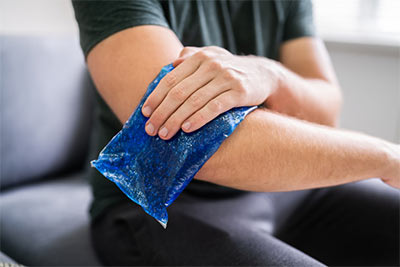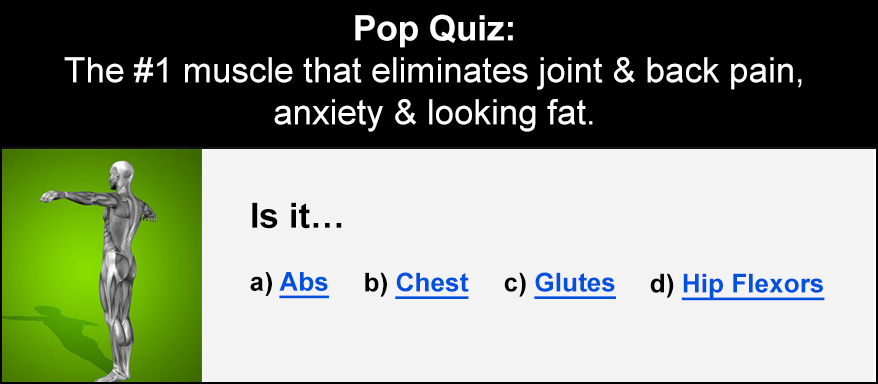
While there are several conditions that can affect the elbow, the 3 most common are golfers elbow, throwers elbow and tennis elbow. Of all of these, tennis elbow is the most common. Tennis elbow affects both men and women equally, but it is more prevalent in adults between the ages of 30 – 50 years of age. (1)
So what is tennis elbow? Tennis elbow is painful inflammation at the elbow joint as a result of repetitive stress. The pain is typically localized on the outside of the elbow, but can radiate down the back of the forearm. The pain associated with tennis elbow is felt when straighten or fully extending your arm. But why? Great question … let’s look at that a bit more in depth.
Tendons are what attach muscle to bone. What some people do not realize is that tendons are more part of the muscle than not. The tendons in your forearm are what attach your forearm muscles to that outside part of the bone in your elbow. When there has been damage to the forearm muscles, specifically the extensor carpi radials bervis (ECRB), the muscle becomes weak. Microscopic tears start to form in the muscle’s tendon right where it attaches to that outside bone of your elbow. It is these tiny tears that cause inflammation and the resulting pain from that.

NO … you do not have to be a tennis player to develop tennis elbow.
Several types of activities that involve the constant twisting of the wrist can contribute to this condition. Some of these activities include:
Tennis … obviously
Golf
Frequent computer use
Swimming
The most obvious symptoms of tennis elbow are:
* Pain that is mild at first but continues to get worse over time
* Weakening of your grip strength
* Pain when squeezing objects, or even when shaking someones hand
* Pain with lifting objects and using certain tools; even with turning a key in a lock
If you do have tennis elbow it is very important that you keep in mind that since this is a soft tissue injury, it needs to be treated as such. The best and most effective course of treatment for your tennis elbow is the RICER method: REST, ICE COMPRESSION, ELEVATION … and a REFERRAL to see a health care professional who is qualified to specifically treat this type of injury.
At the onset of pain you want to ice the painful area. If you are able to keep the ice in place with the use of a compression bandage, that is even better! Do your best to keep your arm/ elbow elevated too to help reduce the inflammation. Keep the ice on the affected area for about 15 minutes, followed by a 30 – 45 minute break. Repeat this “icing” cycle over the next 2-3 days.

After 3 days you really do need to see a specialist/ qualified health care professional to begin a rehabilitative protocol to support and facilitate healing. Your rehabilitative protocol may include heat, massage, ultra-sound and the use of a TENS unit. Once there has been a significant reduction in your pain level, the work to regain strength and agility in the elbow can start.
What if you do not have tennis elbow, but want to take measures to do your best to prevent it happening to you? This is a good question, because, as my Mom always tells me, “Prevention is worth an ounce of cure!” So basically, being smart NOW can save you a lot of pain and aggravation down the road.
When it comes to the prevention of tennis elbow, the best thing that you can do, and especially if you have already had a go-around with tennis elbow, is to do things that support good strength and flexibility of your muscles and tendons in your forearm. This requires awareness on your part. What I mean is … what is it that you do a lot of, that could potentially put you at risk for developing tennis elbow? For example, I spend, on average, about 8 hours 6 days a week at a computer typing. No, this is not some exhaustive physical activity HOWEVER … by the end of 4 hours my forearms are literally screaming at me to STOP! So I’m very aware of this and when I do break to do my workouts, and when I just break because I need a break, I do small exercises/ movements to keep my forearms strong, agile and healthy.

Here are some suggestions for “preventative measures” you can actively do to reduce your risk of developing tennis elbow:
1. First of all, if you have already had tennis elbow, you need make sure that injury is completely rehabilitated before returning to your normal activity.
2. Always … ALWAYS … do a proper warm up before you start your training sessions, your golf game, your tennis practice, etc. It is also a great idea to do some easy stretches in the morning to stretch out your forearms before heading to work, whether you are at a computer all day or you work construction … these stretches can really help.
3. Reduce the amount of activity that is aggravating your elbow and increasing your pain.
4. REST … yes, sometimes what is putting you at risk for developing tennis elbow is what you do for a living and cannot be eliminated from your day, so taking rests becomes super important.
5. Compression sleeves or bandages can help to reduce your pain, however these should not be viewed or used as a cure for tennis elbow. They provide relief … but if you are not doing the above, this type of compression wear will only mask a problem that has not healed yet.
Some specific exercises and stretching routines that you can do to strengthen the muscles of the forearm and support improvement of your daily activities include the following:
Dumbbell Supination & Pronation
Grip Strength Forearm Training
Radial Deviation
Overall, your best defense against developing tennis elbow is to be consistent in working on strengthening your forearm muscles and keeping them healthy and strong. Preventative actions are your greatest investment!
References:
1. Prevalence of Tennis Elbow in the US Population







